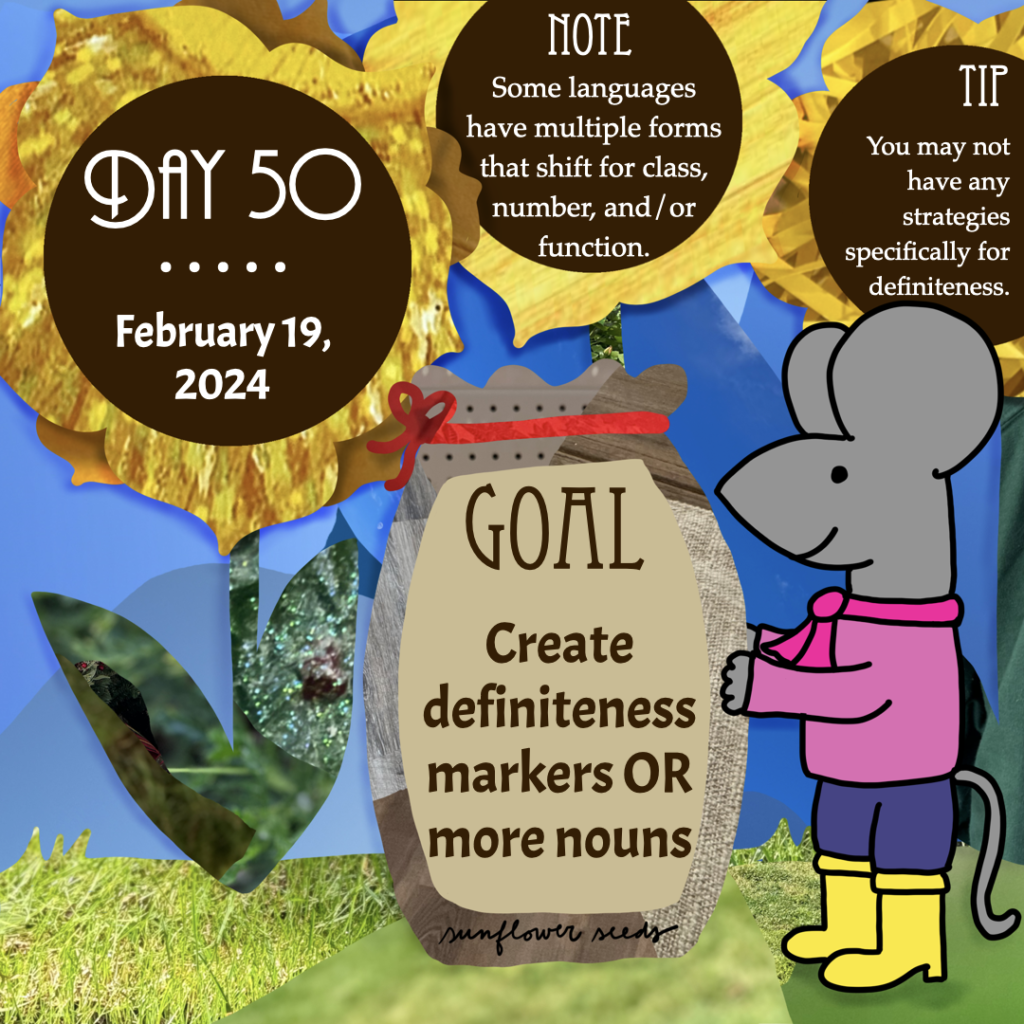
Goal: Create definiteness markers or more nouns
Note: Some languages have multiple forms that shift for class, number, and/or function.
Tip: You may not have any strategies specifically for definiteness.
Work focus: Create/Make/List
If you decided to forego definiteness marking in your language, then you can spend your time making more nouns. As you continue working on your language’s grammar, you can build in other ways to indicate definiteness of a noun (e.g. shifting word order) without creating an inflectional form. However, you may also choose not to have any strategies specifically for definiteness.
If you want to create ways to mark definiteness in your language, you will begin by creating the lexical sources as origins and then reduce those forms to serve as the definite markers, whether they are attached to the noun or occur in a particular position relative to the noun as a function word.
Some languages have multiple forms for definite markers that shift for class, number, and/or function of the noun. As you continue working on forms, remember that you can choose to fuse them together, such as creating a single suffix form that indicates definiteness and number. Those fused forms are created by smashing multiple forms together—the lexical sources for both inflections would first occur as one form after the other, and then, over time, they would reduce into a single form.
